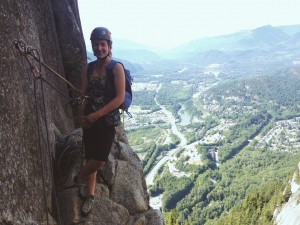Cycling on my way to school, I passed a small elementary private school in Kitsilano. As I was cycling by, I watched the children in PE class, running laps around the field while the teacher followed in behind on her bicycle. The children did not look enthusiastic about the idea of having to run around in circles, but they still plugged away on their journey around the field. On my way home, I saw four children after a soccer practice, practicing their interception techniques to steal the ball and run away from the other children. They laughed and enjoyed one another’s challenges.
As much as we may not like fundamental elements of physical activity such as running, it’s a crucial part of Physical Literacy to be able to know how to use and control our body to develop further into other elements of sports. Our journey along the path of development within this form of literacy is unique to each one of us. Some will excel in certain areas where others may struggle. But part of Physical Literacy is teamwork and leadership and learning to help others and provide opportunities for them to also learn about the health of their body.
Our class presentation gave a unique example of this by means of the badminton exercise. Having the class constantly move courts and rotate among our groups exposed us to different skill levels which encourages diversity of practice and movement. Through this, students who had a more difficult time were given equal chances to work on their movements, often with the encouragement and support of classmates and peers which is a development of Physical Literacy, and students who admired a good challenge were able to take it to the next level and challenge their timing through rotations and shot techniques to make the overall rounds last longer.
Being Physically Literate is a lifelong journey as we progress through our lives with an every changing body and mind.

